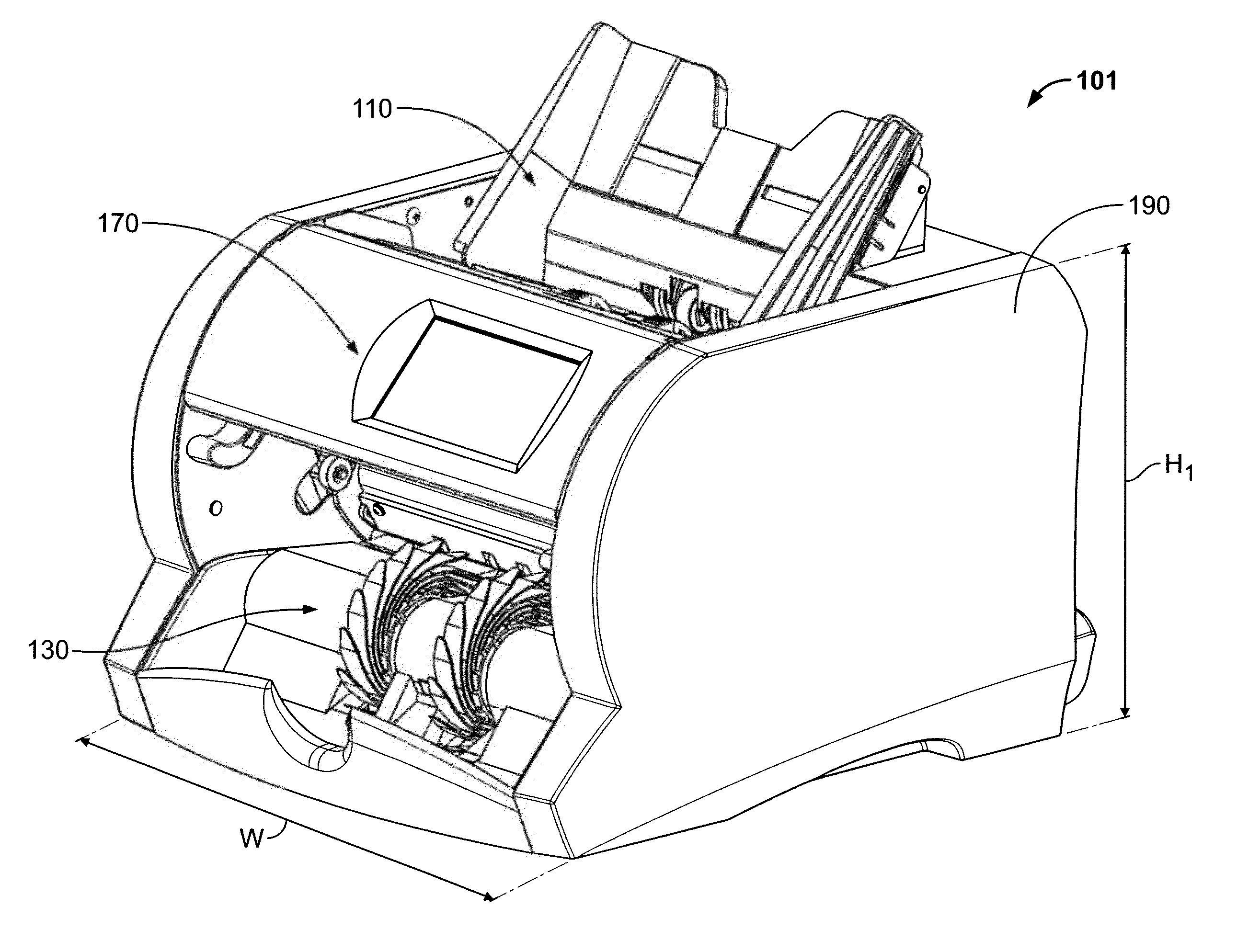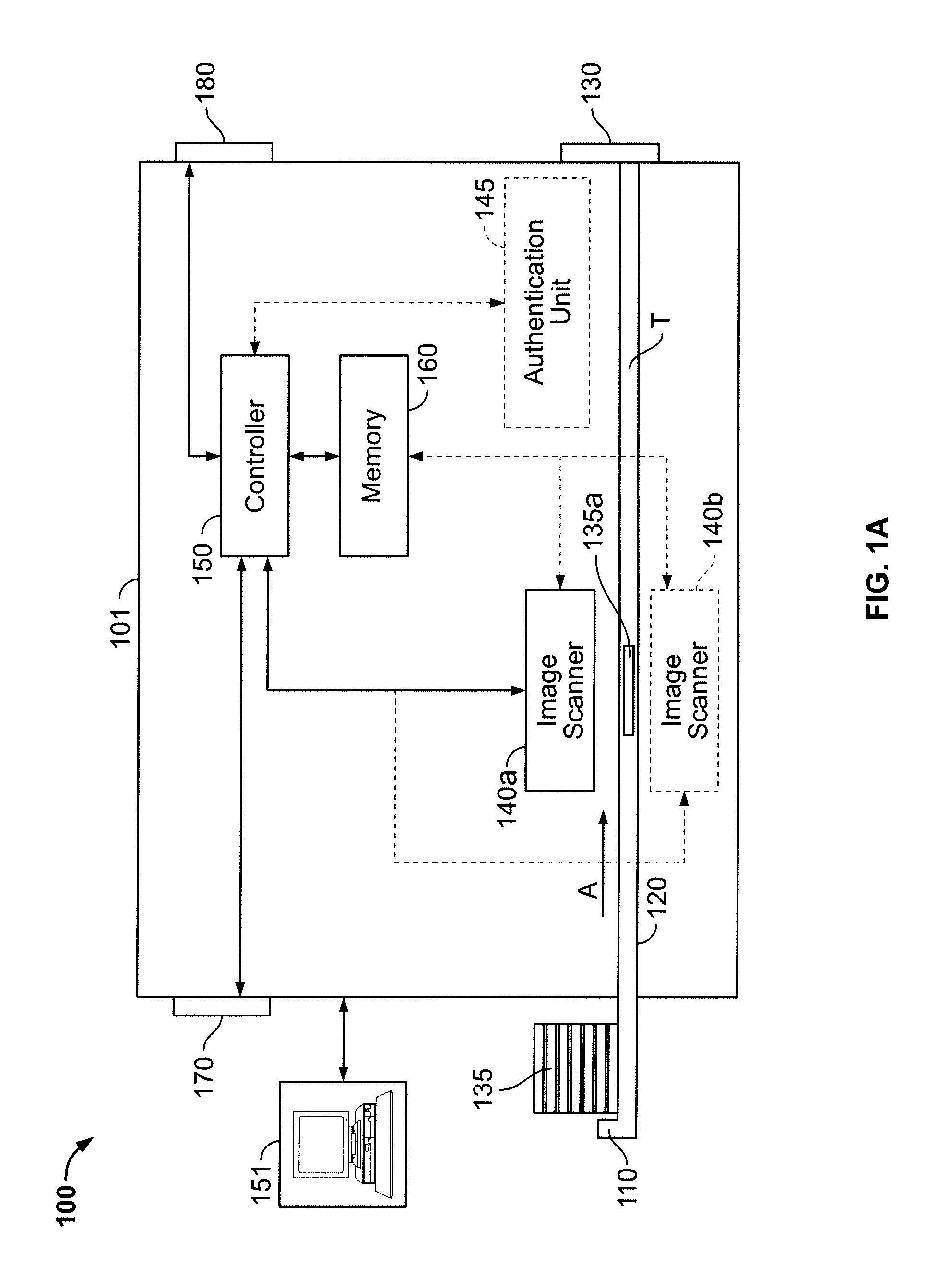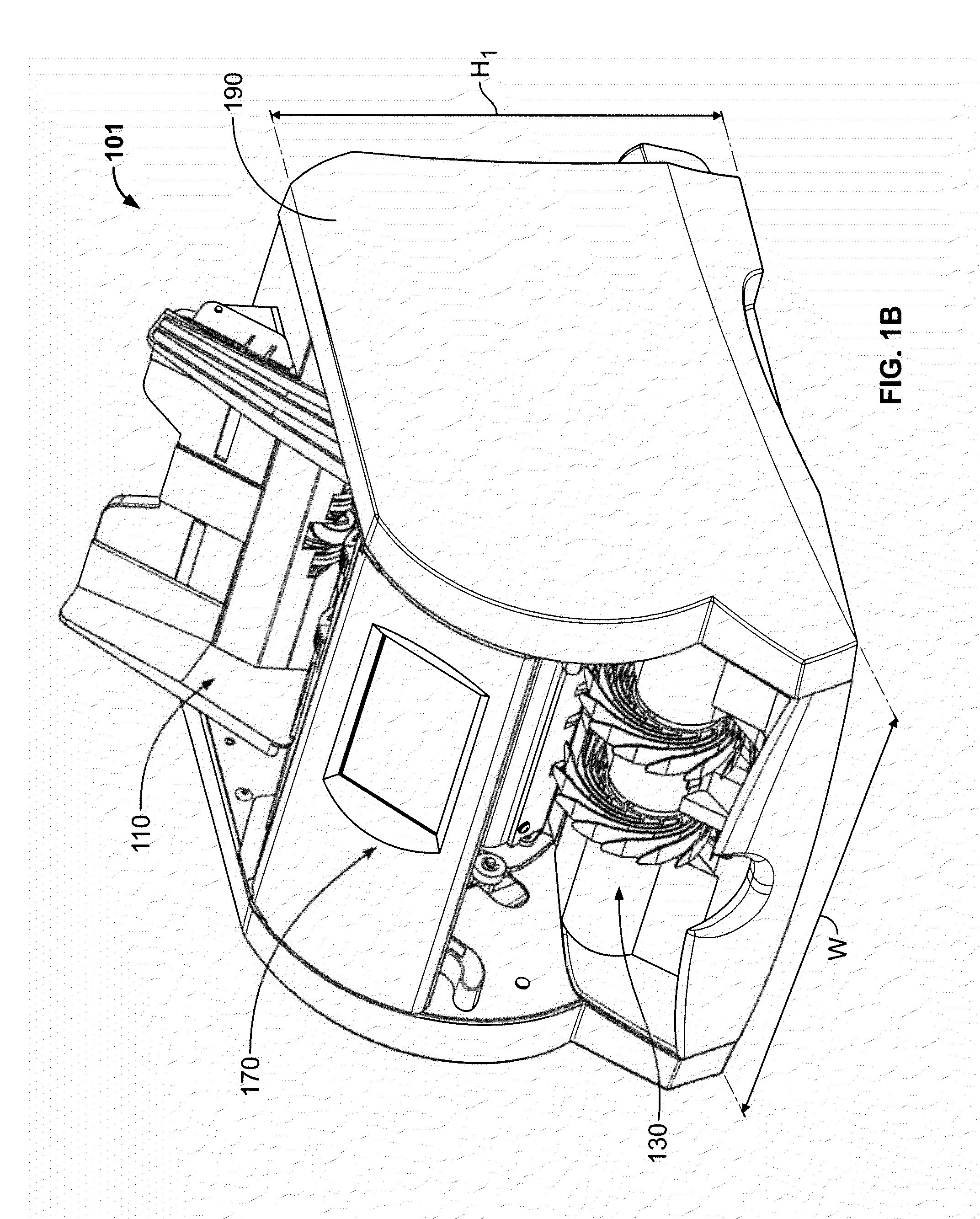Optical imaging sensor for a document processing device
a document processing device and optical imaging technology, applied in the field of document processing systems, can solve problems such as occupying a large spa
- Summary
- Abstract
- Description
- Claims
- Application Information
AI Technical Summary
Benefits of technology
Problems solved by technology
Method used
Image
Examples
embodiment a
Alternative Embodiment A
[0148]A sensor arrangement positioned along a transport path of a document processing device, the sensor arrangement comprising:[0149]at least one light source positioned to illuminate at least a portion of a surface of a document; and[0150]a gradient index lens array positioned to receive light reflected from the surface of the document and to transmit at least a portion of the received reflected light onto a photodetector array,[0151]wherein, the gradient index lens array and the photodetector array are positioned such that the photodetector array receives at least a portion of the reflected light, the photodetector array configured to generate one or more electrical signals from which a visually readable image of the surface of the document can be generated (e.g., in the form of image data) in response to the document being transported along the transport path remaining within a depth of field of the gradient index lens array, the depth of field being at l...
embodiment b
Alternative Embodiment B
[0152]A sensor arrangement positioned along a transport path of a document processing device, the sensor arrangement comprising:[0153]at least one light source positioned to illuminate at least a portion of a surface of a document being transported along the transport path; and[0154]a gradient index lens array positioned to receive light reflected from the surface of the document and to transmit at least a portion of the received reflected light onto a photodetector array,[0155]wherein, the photodetector array is configured to generate one or more electrical signals from which image data can be derived, in response to the document being transported remaining within a depth of field of the gradient index lens array, the image data being reproducible as a visually readable image of the surface of the document having a sufficient resolution such that alphanumeric characters can be extracted therefrom, the depth of field being at least about 0.03 inches.
embodiment c
Alternative Embodiment C
[0156]A sensor arrangement positioned along a transport path of a document processing device, the document sensor arrangement comprising:[0157]a cover having a first surface and a second surface;[0158]a first light source and a second light source, each of the first and second light sources configured to emit light, the emitted light propagating through the cover to illuminate at least a portion of a surface of a document being transported along the transport path; and[0159]a gradient index lens array positioned to receive light reflected from the surface of the document and to transmit at least a portion of the received reflected light onto an active surface of a photodetector array,[0160]wherein, the gradient index lens array and the photodetector array are positioned relative to the cover such that photodetector array receives at least a portion of the reflected light, the photodetector array configured to generate one or more electrical signals from which...
PUM
 Login to View More
Login to View More Abstract
Description
Claims
Application Information
 Login to View More
Login to View More - Generate Ideas
- Intellectual Property
- Life Sciences
- Materials
- Tech Scout
- Unparalleled Data Quality
- Higher Quality Content
- 60% Fewer Hallucinations
Browse by: Latest US Patents, China's latest patents, Technical Efficacy Thesaurus, Application Domain, Technology Topic, Popular Technical Reports.
© 2025 PatSnap. All rights reserved.Legal|Privacy policy|Modern Slavery Act Transparency Statement|Sitemap|About US| Contact US: help@patsnap.com



